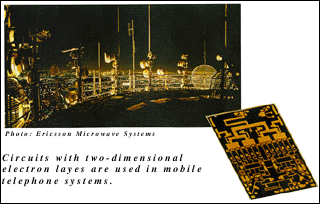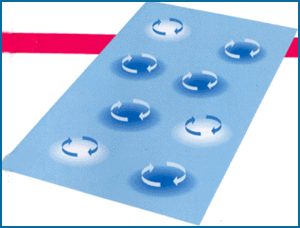Bursting bounds
Mobile telephones, satellite TV, the Net, the globalised economy and politics: the world is changing. Knowledge of electrons is a key to the events and the processes of our time. Soon the circuits used will be so small that quantum fluids with different types of quasi-particles may become forces to be reckoned with in everyday computers.
The discovery recognised with this year’s Nobel Prize in Physics may well turn out to be essential for our future information society.
Horst Störmer and Daniel Tsui did similar experiments simultaneously with von Klitzing’s. They used extremely pure semi-conductors – built atom-by-atom – cooled them to very near absolute zero and used the world’s strongest magnet. In 1982 they suddenly saw entirely new plateaux in the Hall effect. According to the theories of the time this sort of misbehaviour was impossible. Not surprisingly Störmer and Tsui, and those around them, had their doubts at first. But this is also the stuff that science is made of. Suddenly somebody does an experiment with a result that forces us to look at the world with new eyes – and search for new theoretical models.
Robert Laughlin searches for an explanation for Störmer’s and Tsui’s discovery. After a year’s thinking and calculating, his model is complete. It resembles a storm at sea, in which the force of the magnetic wind and the electrons of the quantum fluid create entirely new phenomena – eddies and waves – without being changed themselves.
Nobel Prizes and laureates
Six prizes were awarded for achievements that have conferred the greatest benefit to humankind. The 12 laureates' work and discoveries range from proteins' structures and machine learning to fighting for a world free of nuclear weapons.
See them all presented here.




